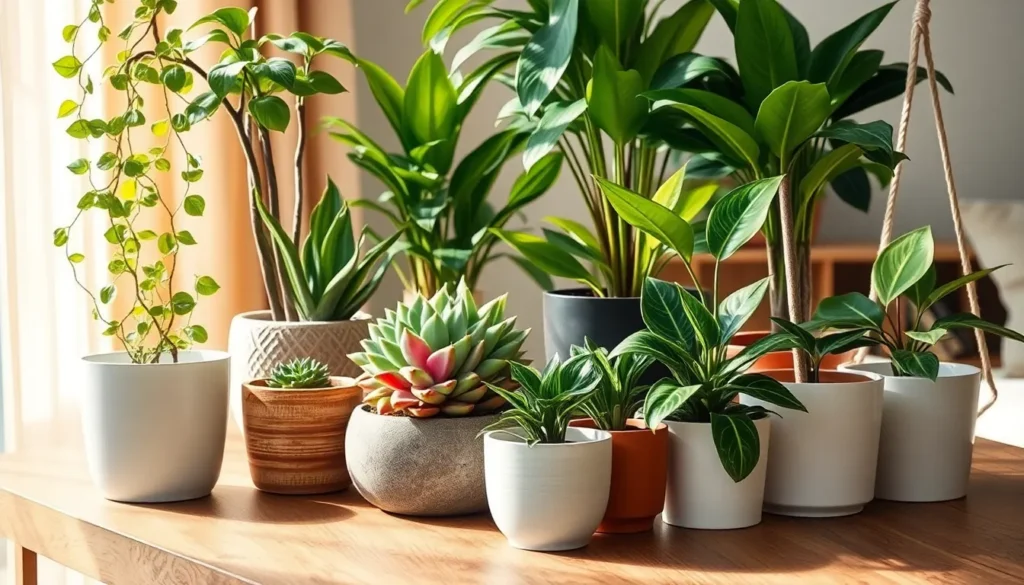Bringing a touch of greenery indoors can transform your living space, infusing it with life and vibrancy. Yet, for many, the idea of caring for indoor plants can seem daunting—especially for those just starting on their gardening journey. Whether you’re a beginner eager to cultivate your first indoor oasis or an experienced gardener looking to add some fuss-free foliage to your collection, the world of low-maintenance plants offers something for everyone. These resilient green companions are not only forgiving, but they also bring a sense of tranquility and well-being, making them perfect partners for our busy lives.
Indoor gardening doesn’t have to be a complex endeavor reserved only for those with a green thumb. With the right selection of plants, even the busiest or most forgetful gardener can enjoy the benefits of indoor greenery without the stress of constant upkeep. In this article, you’ll discover ten easy-care indoor plants that thrive with minimal attention, providing you the joy of gardening without the usual demands. From the robust Snake Plant to the charming Pothos, we’ll guide you through each plant’s unique qualities and simple care tips, ensuring your indoor garden flourishes with ease.
So, whether you’re looking to brighten up your home office or breathe new life into your living room, these beginner-friendly plants are your key to indoor gardening success. By the end of this article, you’ll be equipped with the knowledge to choose and care for plants that fit seamlessly into your lifestyle. Let’s embark on this delightful journey of discovering low-maintenance indoor plants that promise to elevate your home with their enduring beauty.
Introduction to Low-Maintenance Plants

Low-maintenance plants are perfect for those new to gardening or those with a busy lifestyle. These plants are typically hardy and can thrive with minimal attention, making them an excellent choice for beginners looking to add greenery to their living spaces.
When selecting low-maintenance plants, consider those that can tolerate a range of light conditions and have low water requirements. Succulents and snake plants are ideal examples because they store water in their leaves, allowing them to survive infrequent watering.
To keep low-maintenance plants healthy, use a well-draining potting mix. A mix containing perlite or coarse sand is beneficial, as it prevents root rot by allowing excess water to escape easily.
Most low-maintenance plants only require watering every 1-2 weeks, depending on the humidity and temperature of your home. Always check the soil moisture by inserting your finger about an inch deep; if it feels dry, it’s time to water.
For those looking for advanced tips, consider integrating a self-watering pot system to further reduce watering frequency. Additionally, placing your plants on a rotation schedule ensures they receive even light exposure, promoting balanced growth.
Why Choose Indoor Plants?

Choosing indoor plants can transform your living space into a lush, green oasis while also improving air quality. They are perfect for those who want to enjoy nature’s beauty without the need for a large outdoor garden.
Indoor plants are ideal for beginners because they often require less maintenance than outdoor plants. Most indoor plants thrive in indirect light and can adapt to a variety of home conditions, making them versatile and easy to care for.
When starting with indoor plants, consider those that are known for being particularly low-maintenance. Snake plants, pothos, and peace lilies are excellent choices as they can tolerate low light and infrequent watering.
To ensure success, it’s important to use the right type of soil and pot. Choose a pot with good drainage and a soil mix that retains moisture while allowing excess water to escape, such as a peat-based potting mix.
Watering is a key factor in keeping indoor plants healthy. Most indoor plants prefer to dry out slightly between waterings, so check the top inch of soil and water only when it feels dry.
For those looking to advance their indoor gardening skills, try experimenting with humidity levels. Using a humidity tray or misting your plants can help mimic their natural environment, particularly for tropical species.
Top Benefits of Easy-Care Greenery
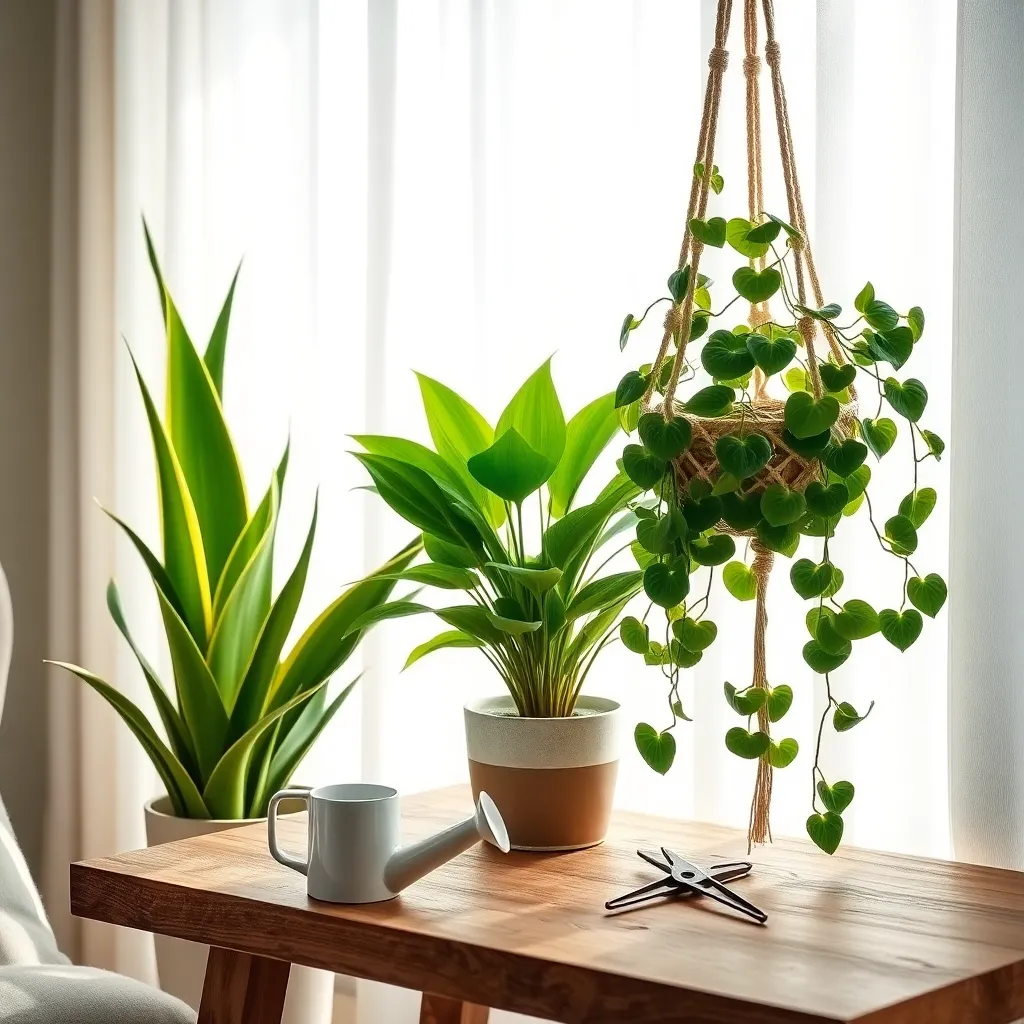
Integrating easy-care greenery into your home offers significant benefits, especially for those new to gardening. These plants often require minimal attention, making them perfect companions for busy lifestyles.
A major advantage of low-maintenance plants is their adaptability to various indoor environments. Many thrive in indirect sunlight and can tolerate occasional neglect, which suits spaces with limited natural light.
These plants are not only resilient but also improve indoor air quality, creating a healthier living space. By selecting species known for their air-purifying qualities, such as spider plants or peace lilies, you enhance both the aesthetic and health benefits of your home.
For beginners, starting with easy-care plants can build confidence in gardening skills. Choose plants like pothos or ZZ plants, which are forgiving of common beginner mistakes like overwatering or inconsistent care.
Here are some practical tips for maintaining these hardy plants:
- Use a well-draining potting mix to prevent root rot.
- Water them only when the top inch of soil feels dry to the touch.
- Fertilize sparingly, about once a month during growing seasons, to support their growth without overwhelming them.
Advanced gardeners can still appreciate the beauty and simplicity of low-maintenance plants by experimenting with different varieties and styling techniques. Try grouping plants with similar care needs to create a lush, cohesive display that requires minimal effort to maintain.
Succulent Sensations: Aloe Vera
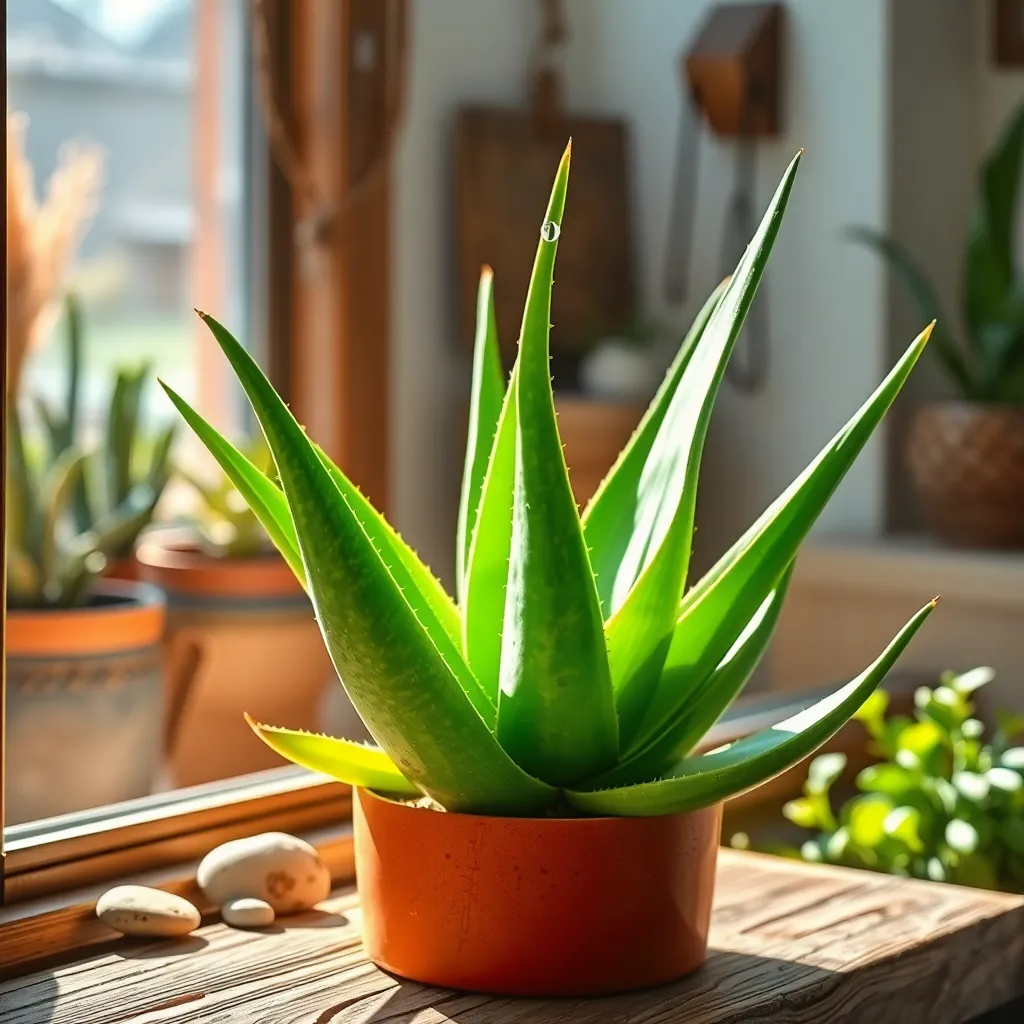
Aloe Vera is a succulent that is both aesthetically pleasing and incredibly low-maintenance, making it perfect for beginners. Known for its medicinal properties, aloe vera can thrive indoors with minimal care, provided it receives adequate sunlight.
Place your aloe vera in a bright spot, such as a south or west-facing window, to ensure it gets plenty of light. However, be cautious of direct, harsh sunlight, which can cause the leaves to scorch; a sheer curtain can help diffuse the light.
Watering aloe vera is straightforward: let the soil dry out completely between waterings, typically every two to three weeks. Overwatering is a common mistake, so make sure the pot has drainage holes to prevent root rot, which aloes are particularly susceptible to.
For optimal growth, use a well-draining cactus or succulent mix, which often contains sand or perlite. Beginners can keep it simple by purchasing a commercial succulent blend, while more seasoned gardeners might mix their own using equal parts potting soil, sand, and perlite.
Air-Purifying Peace Lily
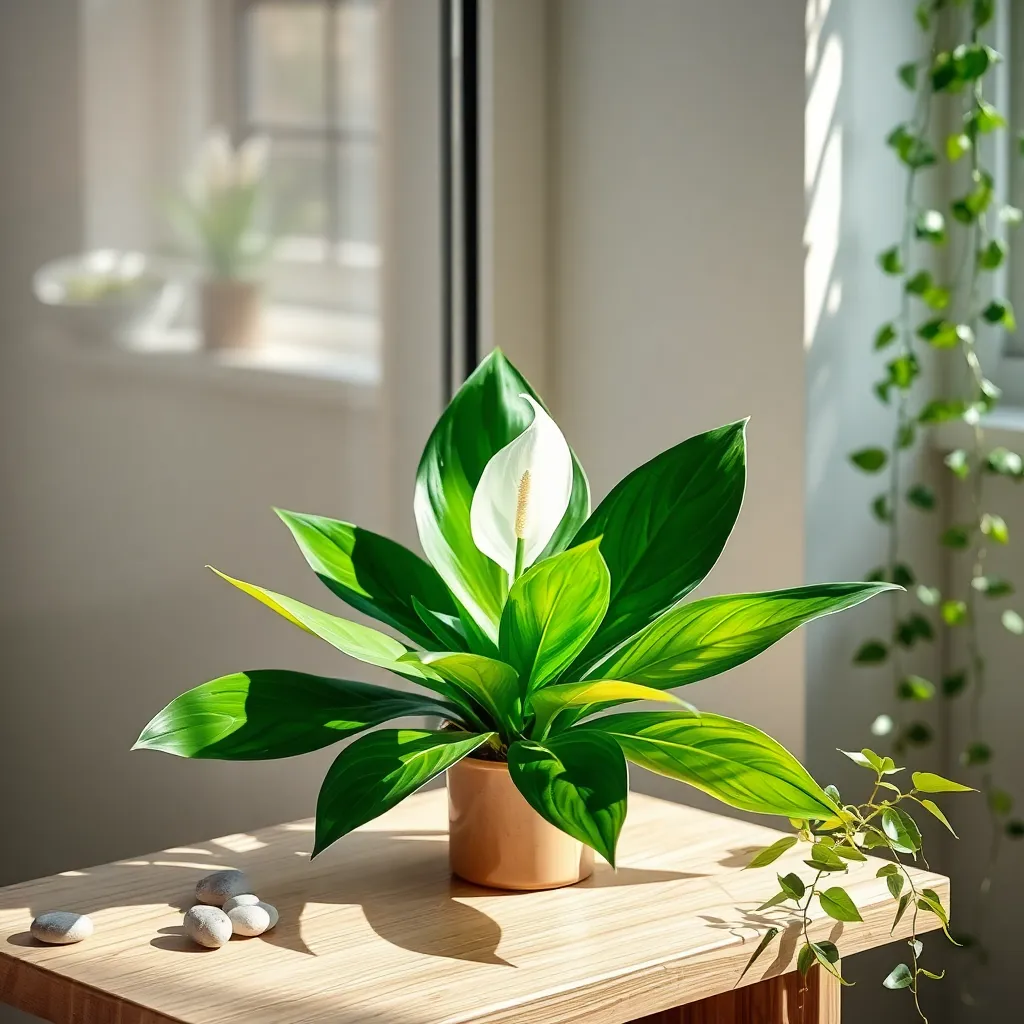
Among the easiest plants to care for, the Peace Lily is an excellent choice for beginners seeking an air-purifying companion. Known for its ability to thrive in low-light conditions, this plant is perfect for adding greenery to dim corners of your home.
To ensure optimal growth, place your Peace Lily in indirect sunlight and water it only when the top inch of soil feels dry. Overwatering can lead to root rot, so it’s crucial to let the soil dry out between waterings.
For the best results, use a well-draining potting mix and consider incorporating a small amount of perlite to improve aeration. Fertilize sparingly, applying a balanced houseplant fertilizer every two months during the growing season.
Advanced gardeners might try propagating Peace Lilies by dividing larger plants during repotting. This not only multiplies your collection but also helps rejuvenate older plants, ensuring they remain healthy and vibrant over the years.
Versatile Spider Plant Guide

The Spider Plant is not just a favorite among houseplant enthusiasts; it’s also incredibly easy to care for, making it perfect for beginners. Thriving in a variety of conditions, this plant can adapt to both bright indirect light and partial shade, ensuring it fits well into almost any home environment.
When it comes to watering, Spider Plants prefer to dry out between waterings, which means they only need to be watered approximately once a week. Overwatering can cause root rot, so ensure the pot has good drainage and use a well-draining soil mix like one containing peat and perlite.
These plants are known for their ability to produce “pups” or offshoots, which can be easily propagated. Simply snip the pups off when they develop small roots and plant them in soil to expand your indoor garden effortlessly.
For those looking to boost their Spider Plant’s health, occasional feeding with a balanced liquid fertilizer during the growing season can be beneficial. Keep in mind that these plants are sensitive to fluoride, so it’s a good idea to use distilled or rainwater if your tap water is fluoridated.
Resilient Snake Plant Insights
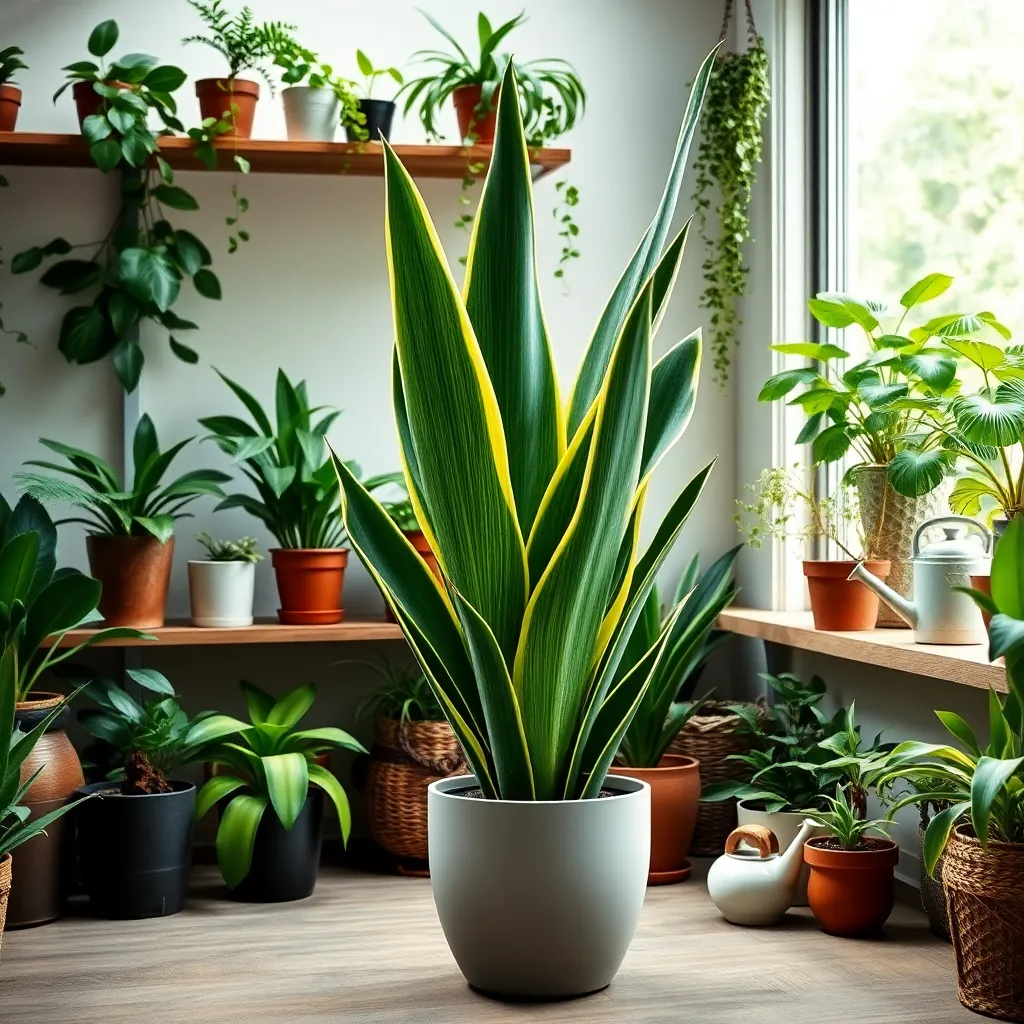
Snake plants, also known as Sansevieria or mother-in-law’s tongue, are ideal for beginners due to their resilience and low maintenance. They thrive in a variety of light conditions, making them perfect for almost any indoor environment.
Watering a snake plant is straightforward: allow the soil to dry out completely between waterings. Typically, this means watering every two to six weeks, depending on your home’s humidity, light conditions, and the season.
To ensure optimal growth, use a well-draining potting mix, such as a cactus or succulent blend, that prevents root rot. Additionally, choose a pot with drainage holes to further safeguard against excess moisture.
For beginners, it’s encouraging to know that snake plants can tolerate neglect and infrequent watering. For those looking to advance their skills, consider propagating snake plants by dividing their rhizomes or leaf cuttings, which is a rewarding process.
Caring for the ZZ Plant
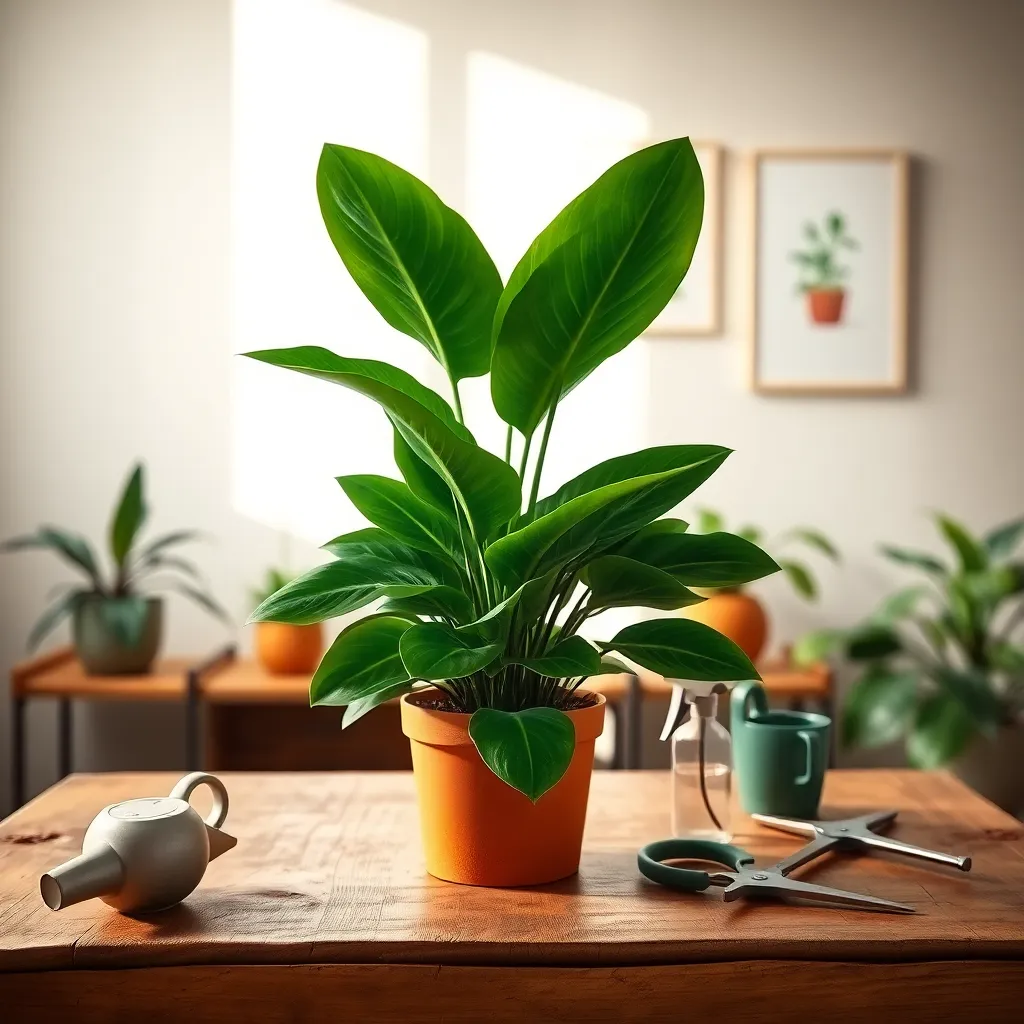
The ZZ plant, or Zamioculcas zamiifolia, is an excellent choice for beginners due to its tolerance of a wide range of conditions. This hardy plant thrives in low-light environments, making it ideal for spaces with limited natural sunlight.
Watering the ZZ plant is simple, as it prefers to dry out completely between waterings. In general, watering every two to three weeks is sufficient, but always check the top inch of soil before adding more water.
ZZ plants aren’t fussy about soil, but they do best in a well-draining potting mix. A blend designed for succulents or cacti is perfect, as it helps prevent water from sitting at the roots and causing rot.
Though ZZ plants are low-maintenance, they benefit from occasional feeding. Use a balanced, water-soluble fertilizer diluted to half strength every month during the growing season in spring and summer.
For those looking to expand their ZZ plant collection, propagation is straightforward. Simply cut a healthy leaf near the base and place it in water or moist soil, where it will eventually develop new roots.
Low-Light Lover: Pothos Plant
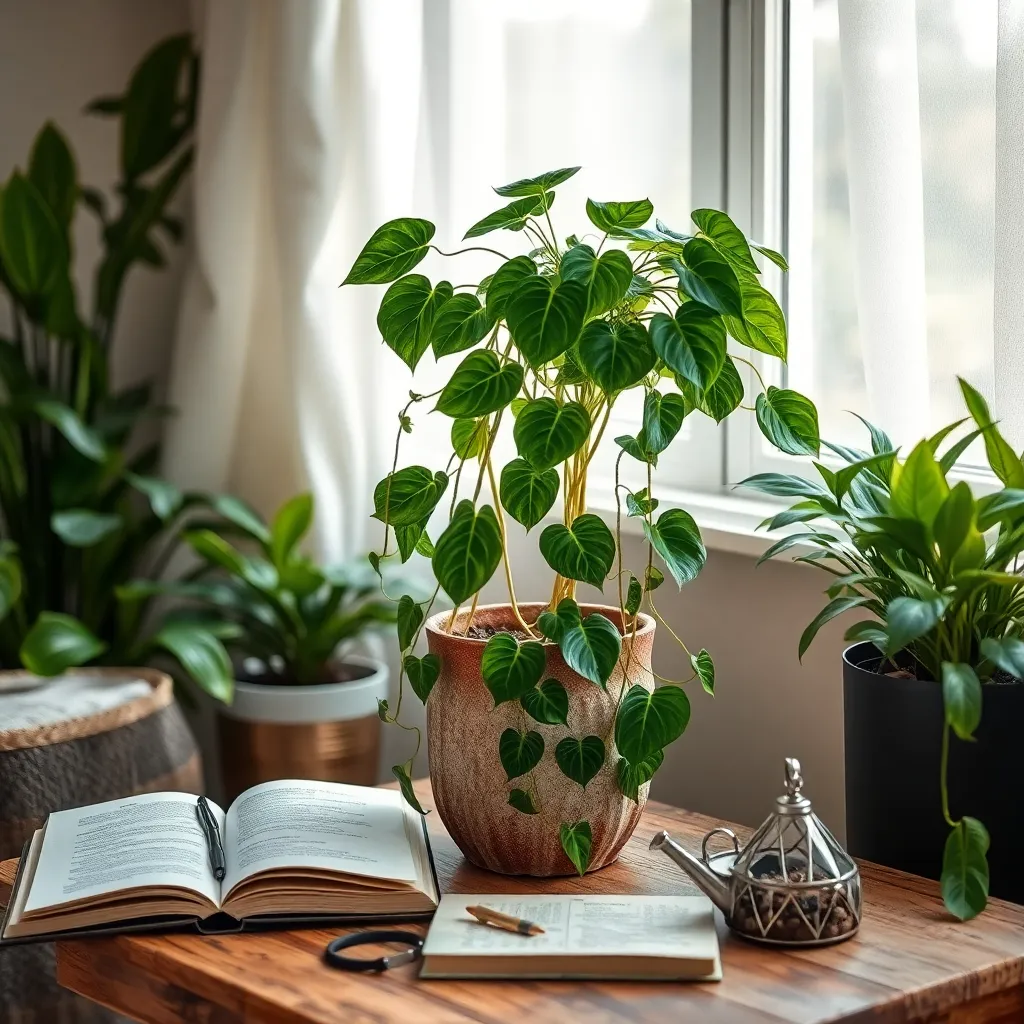
Pothos plants are an excellent choice for beginners due to their ability to thrive in low-light conditions. These resilient plants can adapt to almost any indoor environment, making them highly versatile.
To ensure your pothos plant remains healthy, place it in a spot with indirect sunlight. Although they tolerate low light, keeping them near a window will promote more robust growth.
Avoid overwatering your pothos by letting the top inch of soil dry out between waterings. Use a well-draining potting mix to prevent root rot, which is a common issue with excessive moisture.
For optimal growth, feed your pothos with a balanced liquid fertilizer every 4 to 6 weeks during the growing season. Pruning leggy vines will encourage bushier growth and maintain a neat appearance.
Final Thoughts on Indoor Plant Care
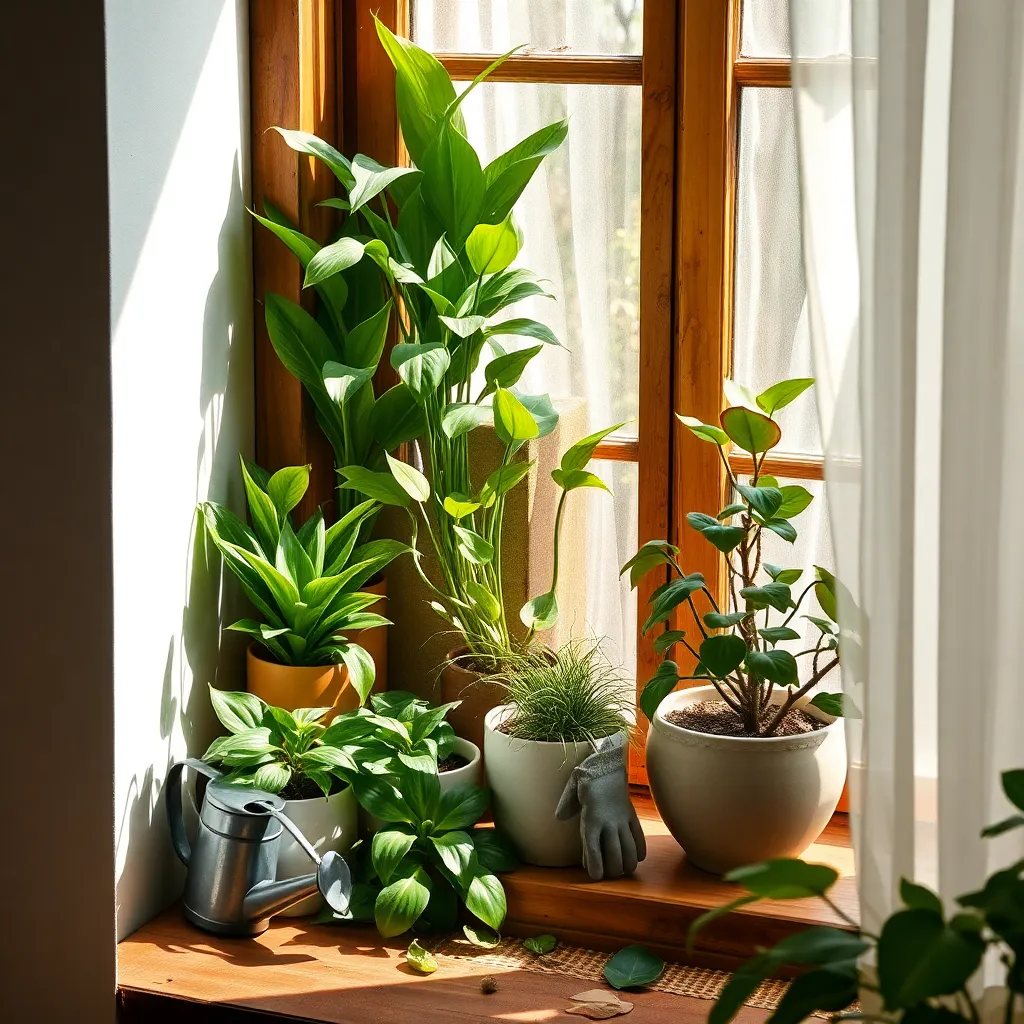
Incorporating indoor plants into your living space is a rewarding endeavor, offering both aesthetic and health benefits. To ensure your plants thrive, focus on understanding each plant’s specific needs, such as light, water, and soil preferences.
Regularly inspect your plants for signs of stress, such as yellowing leaves or wilting, which can indicate either overwatering or underwatering. Adjust your watering schedule based on the plant’s requirements and the season, as some plants need less water during their dormant period in the colder months.
Choosing the right soil is crucial for indoor plant success. Most houseplants thrive in a well-draining potting mix; you can enhance drainage by mixing in materials like perlite or orchid bark for plants that need excellent aeration.
Lighting is often the most challenging aspect of indoor plant care, but it can be managed with a few simple adjustments. If natural light is insufficient, consider using grow lights to supplement; these are especially useful during shorter winter days.
As you gain confidence, experiment with more advanced techniques, such as propagation, to expand your indoor garden. Propagating plants like pothos or spider plants is a simple way to create new plants from cuttings, offering both a cost-effective and rewarding gardening experience.
Finally, remember that patience and observation are your best tools in indoor plant care. By taking the time to understand your plants’ needs and responding to their signals, you’ll cultivate a thriving indoor garden that brings joy and tranquility to your home.
Conclusion: Growing Success with These Plants
In exploring the article ’10 Low-Maintenance Indoor Plants For Beginners,’ we discovered the parallels between nurturing plants and fostering healthy relationships. From understanding the importance of patience and providing space, to appreciating growth and consistent care, each plant taught us a unique lesson on strengthening bonds. We touched on the significance of setting foundations like the resilient Snake Plant, embracing adaptability with the flexible Spider Plant, and cherishing simplicity as the Peace Lily does. Each plant metaphorically mirrored essential relationship concepts such as trust, communication, and mutual respect.
As a next step, consider integrating these insights into your daily interactions. Choose one relationship principle highlighted by a plant and apply it today, whether it’s offering more patience or giving your partner space to grow.
To ensure these valuable lessons accompany you on your relationship journey, save or bookmark this article now. It can serve as a handy guide whenever you seek inspiration or a gentle reminder of how to nurture your connections.
Remember, just as these plants thrive with mindful care, so too can your relationships blossom into enduring sources of joy and support. Here’s to cultivating thriving relationships that stand the test of time!

